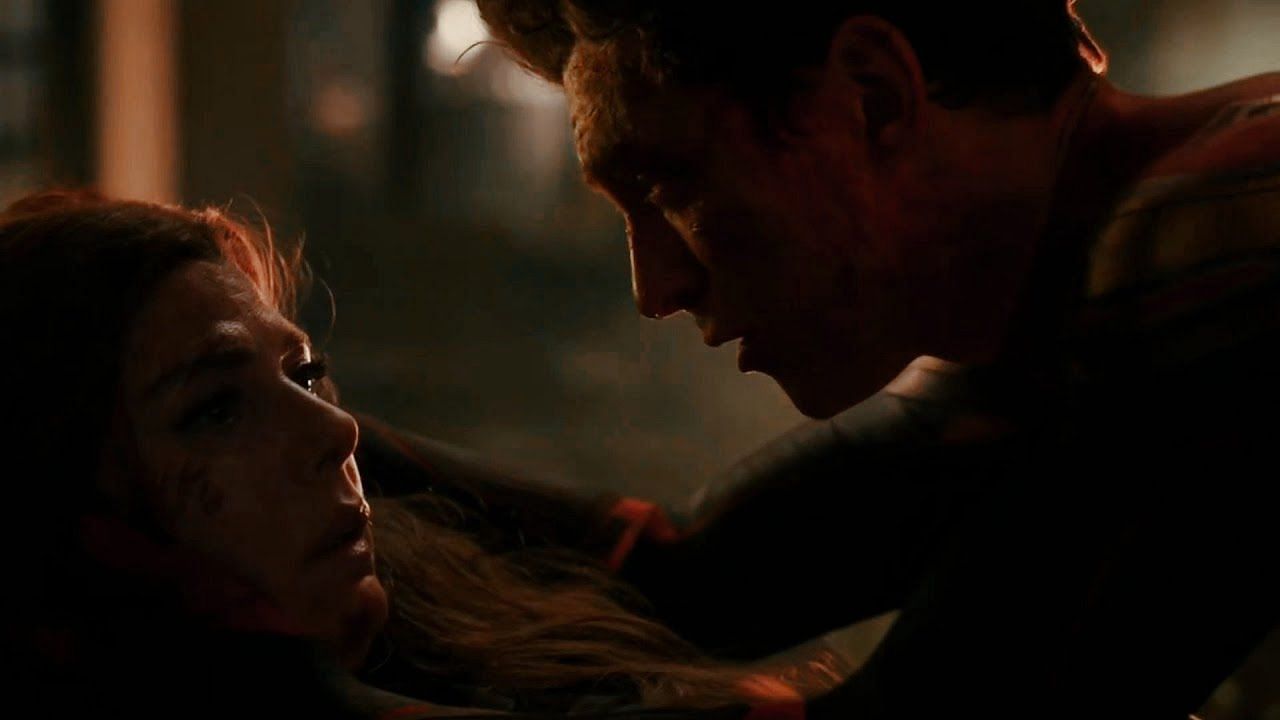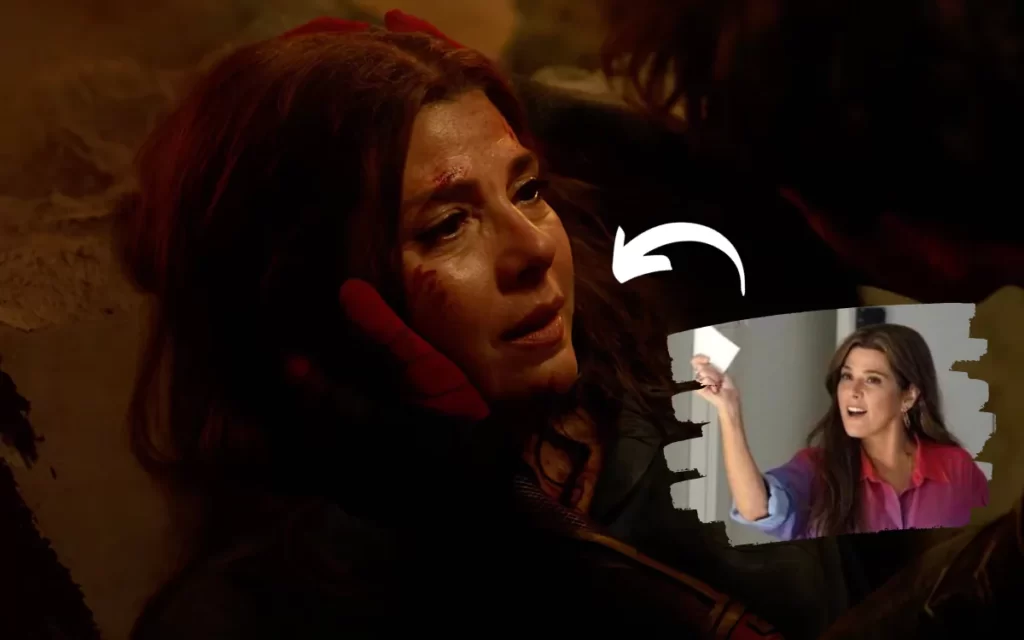Hey Marvel enthusiasts! Ever stumbled upon a twist in the Spider-Verse that left you wide-eyed? Well, brace yourself. There’s a storyboard revelation from “Spider-Man: No Way Home” that’s causing quite the stir. Remember Aunt May’s heart-wrenching scene? Turns out, there’s more to that story than meets the eye. Dive in as we unravel the original script’s shocking twists, the fan debates it sparked, and the profound impact Aunt May’s journey has on our beloved Spidey. Whether you’re Team Mysterio or Team Green Goblin, this one’s bound to get you talking.
Yes, in Spider-Man: No Way Home, the Green Goblin killed Aunt May. But why did this happen Let’s swing into it!
The Shocking Revelation from the Storyboard
Ever thought you knew all there was to know about “Spider-Man: No Way Home”? Think again. A recently unveiled storyboard has thrown a curveball into the mix, and it’s all about Aunt May’s tragic end.
Now, if you’ve seen the movie (and let’s face it, who hasn’t?), you’d remember the heart-stopping moment when the Green Goblin delivers the fatal blow to Aunt May. But here’s where things get interesting: the original storyboard tells a different tale. In this version, it wasn’t the Green Goblin who was the harbinger of doom. Instead, it was Mysterio, the master of deception, played by the talented Jake Gyllenhaal.
Imagine that! Mysterio, with his knack for creating illusions, is the one to end Aunt May’s life. It’s a twist that could’ve added another layer of complexity to the story. Picture Spider-Man grappling with the reality of Mysterio’s deception, questioning what’s real and what’s an illusion.
But why the change? Why did the creators decide to pivot from Mysterio to the Green Goblin? While we might never know the full reasons, it’s clear that the final choice resonated with audiences worldwide. The Green Goblin’s act became a pivotal moment in the film, setting the stage for Spider-Man’s subsequent actions.
The Evolution of Aunt May’s Death in the Script
Aunt May’s exit in the movie was a tear-jerker, no doubt. But here’s a twist: the first draft had a different villain delivering that fatal blow. Instead of the Green Goblin, it was Mysterio, our illusion master, who was set to be the cause of Aunt May’s demise. Yep, you read that right!
Now, why is this significant? Mysterio, aka Quentin Beck, had a deeper connection with Peter Parker. They shared moments, trust, and a bond, even if it was short-lived. So, imagine the emotional turmoil for Peter, realizing that someone he once trusted was responsible for his aunt’s death. It’s like a double betrayal, adding layers of complexity to Peter’s journey.

But the script evolved, and the Green Goblin took center stage. While Norman Osborn’s villainous turn had its weight, Mysterio’s role would’ve added a unique depth. It’s not just about the act of killing; it’s about the emotional and psychological aftermath. Mysterio, having already unmasked Spider-Man’s identity in “Far From Home”, would’ve been the perfect candidate to further shatter Peter’s world.
Aunt May’s character in the MCU was a beacon of love and support for Peter. Her death, regardless of the perpetrator, added depth to her narrative. But imagine a scenario where Peter goes full “berserker mode” on Mysterio, fueled by rage and grief. It paints a darker, more intense picture, doesn’t it?
In the end, while the Green Goblin’s act was spine-chilling, Mysterio’s potential role could’ve taken the story in a grittier direction. It’s a testament to the ever-evolving nature of scriptwriting, where choices can reshape the entire narrative.
Fan Reactions to the Storyboard Twist
First off, the sheer surprise of it all! Many fans had settled into the narrative of the Green Goblin being the one to end Aunt May’s journey. But the storyboard threw a curveball, suggesting Mysterio as the original antagonist in that scene. The internet was abuzz with debates, discussions, and a whole lot of “What ifs.”
The emotional weight of Mysterio being the one to deal with the fatal blow was a hot topic. Given his history with Peter Parker and the trust that was once there, this twist would’ve added a deeper layer of betrayal to the story. Fans speculated on how this would’ve impacted Peter’s psyche and his subsequent actions in the film.
Then there’s the production side of things. The pandemic played a significant role in reshaping this crucial scene. Originally, the scene was envisioned to take place inside an ambulance. But due to COVID-19 restrictions, this idea had to be scrapped. It’s fascinating to think about how external factors, like a global pandemic, can influence the storytelling of a blockbuster movie.
Of course, Aunt May’s iconic line, “With great power,” was another focal point. Fans appreciated its inclusion, noting its significance in the Spider-Man lore. The line, as mentioned by both Tobey Maguire and Andrew Garfield’s Spider-Men, has been a guiding principle for all iterations of the web-slinger.
In the end, while the film took a different direction, the storyboard revelation gave fans a glimpse into the ever-evolving world of movie-making. It’s a testament to the dedication of the writers and producers, ensuring that the story resonates with audiences while staying true to the essence of Spider-Man.
The Significance of Aunt May in Spider-Man’s Journey
Aunt May’s tragic end in the film was a pivotal moment, not just for the storyline but for Peter Parker’s evolution as Spider-Man. The scene, as heart-wrenching as it was, showcased her unwavering belief in doing what’s right. And it’s in this moment that she delivers the iconic line, “With great power, there must also come great responsibility.” This phrase, echoing through the Spider-Man lore, became Peter’s guiding principle, shaping his actions and decisions.
But did you know that the scene almost looked different? Originally, the emotional climax was envisioned inside an ambulance. However, due to the challenges posed by the pandemic, this idea was shelved. It’s intriguing to think how such external factors can influence the portrayal of a character’s pivotal moment.
Despite the changes, the scene’s impact remained undiminished. Watching Aunt May, seemingly fine at first, only to collapse moments later, was a gut punch. It highlighted the fragility of life and the profound influence Aunt May had on Peter’s journey.
Her death wasn’t just a plot point; it was a catalyst. It propelled Peter into a whirlwind of emotions, from grief to rage, and ultimately, to acceptance and growth. Aunt May’s teachings, her unwavering faith in Peter, and her belief in the greater good became the bedrock of Spider-Man’s ethos.
In the vast Marvel universe, characters come and go, but Aunt May’s influence on Spider-Man is eternal. Her legacy, her teachings, and her love will forever be a guiding light for our friendly neighborhood Spider-Man.
So, next time you’re re-watching “Spider-Man: No Way Home”, spare a thought for what might have been. The world of Marvel is vast and ever-changing, and who knows what other surprises are waiting in the wings?


